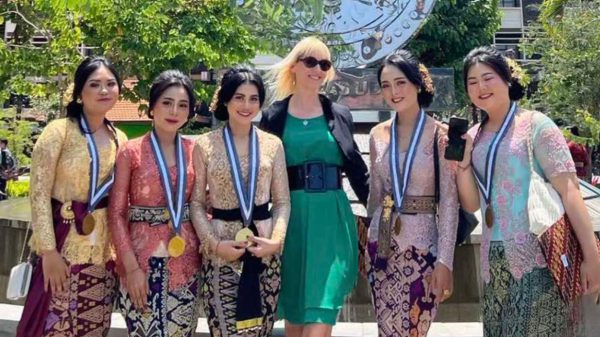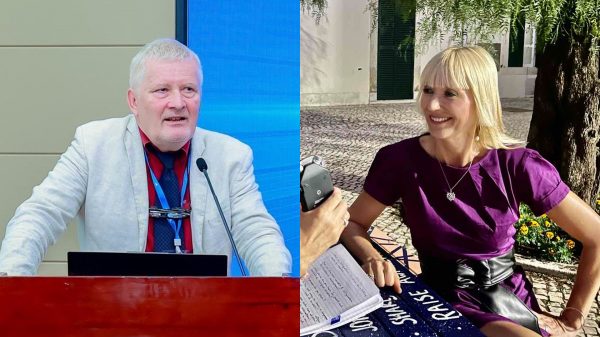
19.06.18
‘Where do you come from?’: UN World Refugee Day
By Dina Mehmedbegovic-Smith

Bosnian National Library after strategic shelling: termed ‘cultural genocide’, 1992. Photographer: Jerome Dancerelle
Wednesday, 20th of June, is the United Nations’ (UN) World Refugee Day, which was established in 2001.
2001 marked the 50th anniversary of the 1951 UN Convention on refugees, and that the Organization of African Unity (OAU) agreed to have International Refugee Day coincide with Africa Refugee Day on the same date. The Assembly therefore decided that the 20th of June would be celebrated as World Refugee Day from 2001 onwards. This day was designated by the UN High Commissioner for Refugees to bring attention to the plight of approximately 14 million refugees around the world.
This event honours the courage, strength and determination of women, men and children who are forced to flee their homeland under threat of persecution, conflict and violence. It is also a day to recognise the contributions of refugees in their communities.
This year’s theme is: “Becoming Neighbours”.
Through my work in schools, focusing on supporting refugee children to integrate into their new environment, I have developed an approach which is very relevant to this “Becoming Neighbours” theme. It is about understanding how historical circumstances impact on individual lives and shape individual identities. It is about developing a mutual understanding of migrations and processes which lead to the displacements of communities and individuals. Using first languages is a key element of this initiative and it supports the implementation of a Healthy Linguistic Diet. This work has been recognised as gold standard practice by the Department of Education and NALDIC and has been published by the British Council as a chapter in the book: ‘Innovations in English Language Teaching for Migrants and Refugees’, edited by David Mallows.
For all our readers here is the introduction to my chapter and a link to download the whole book: please click here
Chapter 5: In search of high level learner engagement: autobiographical approaches with children and adults.
By Dina Mehmedbegovic
Introduction
This chapter provides insights into the efforts of a teacher (the author of this chapter), new to working with migrant and refugee children, to develop an approach which aimed to engage children at different levels of English proficiency, and with different levels of literacy skills in any language they use and that was adaptable for different age groups.

Bosnian National Library after restoration, 2017. Photographer: Martin Smith
As a new teacher in charge of developing support for new arrivals and refugees in a very diverse inner-London comprehensive secondary school, with 20 per cent of the children on roll identified as refugees, I was looking for recommendations on strategies to engage with these groups of children. Having consulted relevant literature and key websites, one strategy stood out: autobiographical writing. It seemed to capture many of the most important principles of English as an additional language (EAL) practice: using prior experiences in learning; securing relevance to all children; and providing opportunities in which every child is an expert.
Inspired by my readings I began developing the initial assessment tools for all new arrivals, structuring them around autobiographical writing, using first languages and English, where possible. In the case of children, who were new to schooling and had no literacy in any language, a structured speaking activity was used with the help of interpreters.
What became obvious very quickly was that there was a lot sensitivity involved in topics such as home, family and prior experiences. Some of these children were arriving from refugee camps or conflict zones; some were unaccompanied minors, some had a false identity for various reasons to protect their safety. Understandably so, there was often an unmistakable sense of discomfort with anything autobiographical.
Many of these children had gone through extraordinary experiences which could either frame them as victims or resilient young individuals. It was important to prevent them internalising often well meaning, but pity-type messages that people arriving from conflict zones encounter on an everyday basis, which pave the way of developing victim identities. Just a simple question: ‘Where do you come from?’ will result in a very different conversation for somebody coming from Brazil and somebody coming from Somalia. A new arrival from Brazil will almost certainly be talking about the natural beauty of Brazil, world class football, good food and will walk off with a sense of pride, feeling good about his/her own identity. However, for somebody from Somalia the same question will almost certainly lead into a conversation which will centre on expressions of sorrow and concern. While the conversation might be appropriate and well meaning, it will almost certainly have a negative impact on that child. For Somali children, a ‘where do you come from’ conversation will almost certainly never be about anything else but war and its consequences rather than something which a child can feel proud of. A Somali child will walk away from such conversations with a guaranteed additional burden, which, if internalised, moves them a step closer to developing aspects of victim identity. As I write this chapter Mo Farah, originally from Somalia, wins two gold medals for Britain in the London 2012 Olympic Games. This historic achievement for British athletics will most certainly change the identity messages received by Somali children in their immediate and wider community. They are very likely to be hearing that there is a reason to be proud of their background and contribution of their compatriot. Mo Farah’s gold medals will shed sparks of pride, hope and high expectations over the experiences of many Somali children in our schools for years to come.
To conclude this section, the questions which emerged for me while developing suitable strategies for working with new arrivals were:
- How does one structure the use of autobiographical approaches, which bring relevance to all in the classroom and engagement with prior experience, without intimidation?
- How can this work take every child along the path of resilience and affirmation?
- How do we provide opportunities for children to tell their own narratives which
will challenge stereotypes imposed by media or even curriculum?
The search for an appropriate strategy continued …
For the rest of my chapter: In search of high level learner engagement: Autobiographical approaches with children and adults please click here (see pages 63- 72.)
About the author
https://ecspm.org/wp-content/uploads/2018/12/Rethinking-Language-Education.pdf
Dina’s work on using autobiographical multimedia classroom approaches to develop intercultural competencies has been published and recognised as good practice by the Department of Education, NALDIC (National Association for Language Development in the Curriculum) and the British Council.

